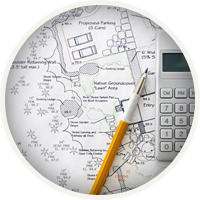
Imagine breaking the Earth up into a bunch of pieces, examining each piece, then reconstructing the whole thing. Not exactly a dull gig, right? That’s kind of what remote sensing technicians do. They work with a team of scientists to collect and analyze data about pieces of the planet, and they get that data from satellites and photos taken by high-flying planes. This information can help organizations find natural resources, create plans for new building construction, and even determine how to keep our country safe from attack. You’ll end up producing things like digital maps, charts, and graphics, so a background in computers is helpful. Good news is all you need is a two-year degree to qualify for this rather cool (and growing) career.
The Details
It gets hot in Texas—remote sensing technicians gather data about the water levels in the state to help it better understand and plan for the effects of a drought.
The term “remote sensing” was first used in the U.S. in the 1950s by the U.S. Office of Naval Research—it commonly refers to the science of observing and measuring objects without coming into direct contact with them.






